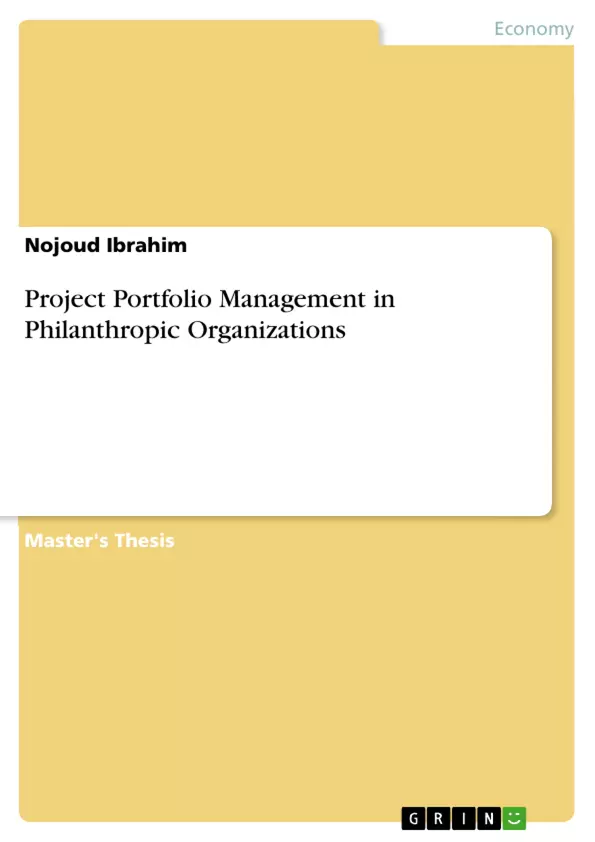It may be said that we are now in a golden age of philanthropy; due to the unprecedented amount of money received by the non-profit sector. However, most philanthropic organizations are lacking in strong strategic plans and established procedures that can
support sound project or portfolio selection decisions. Moreover, the combination of weak strategic plans and increased scale of giving is likely to cause unwise selection of projects and portfolios. These projects would not be able to achieve the maximum social impact desired by their organizations. The purpose of this research is to identify the most appropriate portfolio management approach for philanthropic settings. The study is exploratory in nature; since direct literature on the topic was almost non-existent. The research process uses mixed qualitative and quantitative methods to attain comprehensive results. It includes a review of the current literature, followed by the data collection
methods used: exploratory study and survey method. The major findings indicate that the current portfolio management approaches do not match the nature of the philanthropic sector; there is need for development of a revised approach capable of selecting portfolios
of maximum social impact. Moreover, recommendations for effective portfolio management in philanthropic organizations are provided, future challenges identified and suggestions made for future research.
Inhaltsverzeichnis (Table of Contents)
- Introduction
- Introduction
- Background Information
- Problem Statement and Synopsis
- Aim, objectives and research questions
- Structure of the Research
- Research Limitations
- Understanding Project Portfolio Management
- Related Definitions
- Need for Portfolio Management
- Alignment with Organization Strategy
- PPM Goals
- History of PPM
- PPM Process
- Factors affecting the PPM Process
- Project Portfolio Selection approaches
- Project Portfolio Selection Models
- Challenges faced by the PPM process
Zielsetzung und Themenschwerpunkte (Objectives and Key Themes)
This research aims to identify the most appropriate portfolio management approach for philanthropic settings. It explores the current state of portfolio management in the non-profit sector and examines the challenges and opportunities related to applying portfolio management principles to philanthropic projects. The key themes explored in this work include:- The growing importance of strategic planning in philanthropic organizations
- The need for effective portfolio management to maximize social impact
- The challenges of applying existing portfolio management approaches to the philanthropic context
- The development of a revised approach to portfolio management tailored for philanthropic organizations
- Recommendations for future research on portfolio management in philanthropic settings
Zusammenfassung der Kapitel (Chapter Summaries)
Chapter 1 provides an introduction to the research, outlining the background, problem statement, and research objectives. It discusses the research limitations and provides an overview of the research structure. Chapter 2 delves into the concept of Project Portfolio Management (PPM), exploring related definitions, the need for PPM, its alignment with organizational strategy, and its goals. It examines the history of PPM and provides a detailed overview of the PPM process, including factors affecting the process and various project portfolio selection approaches and models. The chapter concludes with a discussion of challenges faced by the PPM process.Schlüsselwörter (Keywords)
The research focuses on Project Portfolio Management (PPM), philanthropy, non-profit organizations, strategic planning, social impact, portfolio selection, and challenges in applying PPM in philanthropic contexts. This research offers valuable insights into developing a revised portfolio management approach tailored to maximize social impact within the unique characteristics of the philanthropic sector.- Citar trabajo
- Nojoud Ibrahim (Autor), 2011, Project Portfolio Management in Philanthropic Organizations, Múnich, GRIN Verlag, https://www.grin.com/document/181131



